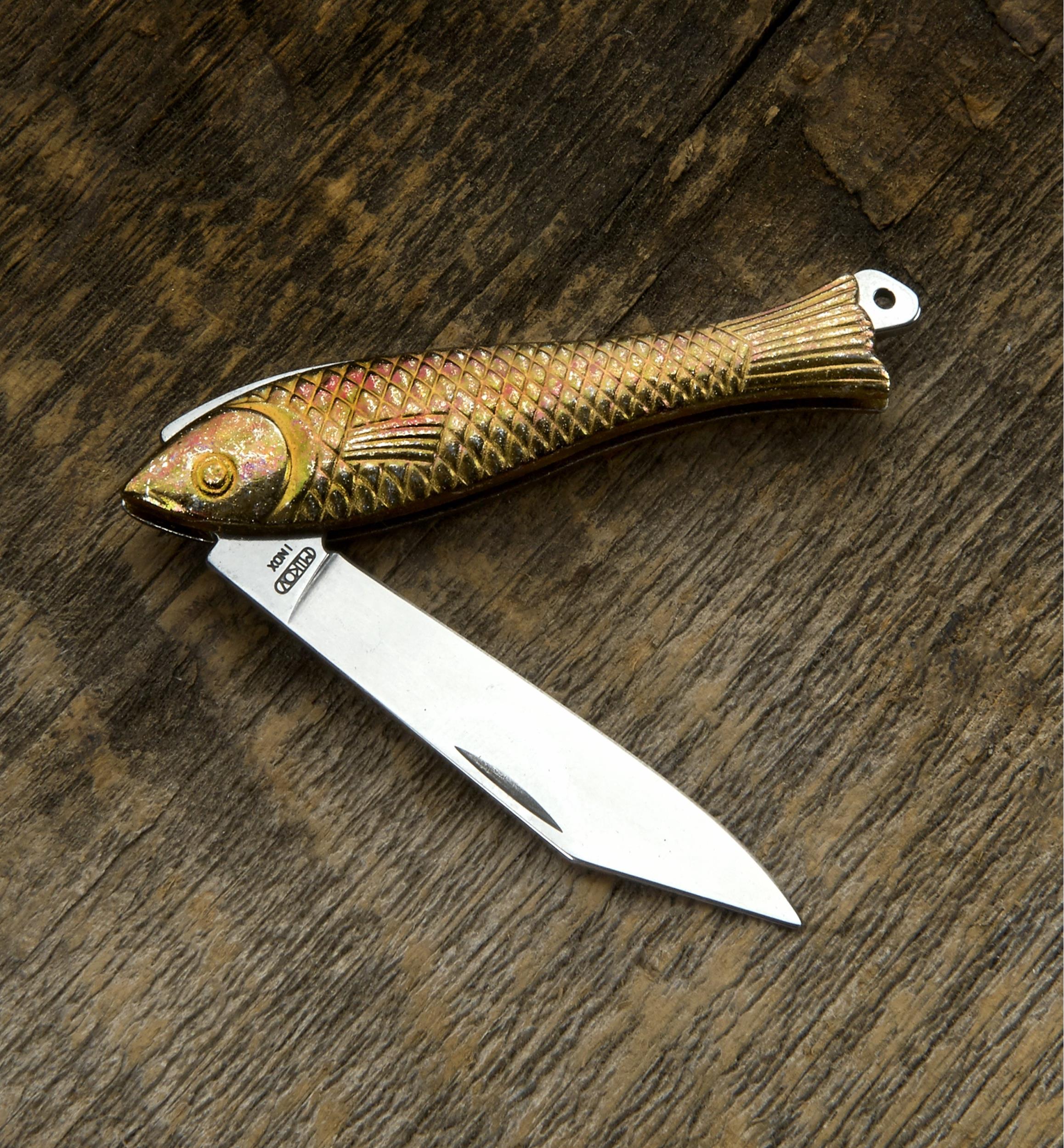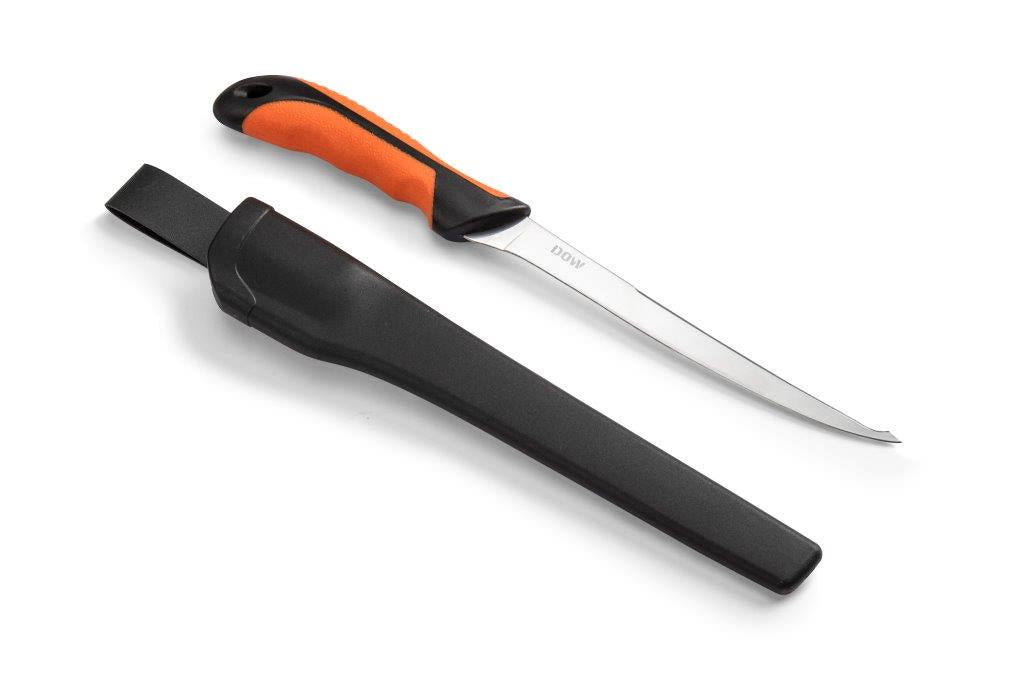Discover the Essential Features to Seek in a Top-Quality Fish Knife
When selecting a fish knife, several crucial features require attention. The blade product dramatically influences toughness and sharpness, while versatility plays a critical duty in precision. Furthermore, the manage design affects convenience during extended usage. Edge retention and safety attributes are additionally crucial for useful use. Recognizing these aspects will certainly guide customers toward making an enlightened option, yet the subtleties of their value may not be instantly clear.
Blade Product and Building
The effectiveness of a fish knife mainly pivots on its blade material and building and construction - fish knife. High-grade fish knives typically feature blades made from stainless-steel, high-carbon steel, or a combination of both. Stainless steel is favored for its deterioration resistance and low upkeep, making it perfect for freshwater and deep sea environments. High-carbon steel, while vulnerable to rusting, provides premium sharpness and side retention, interesting those who focus on reducing performance
The building of the blade also plays an important duty in its effectiveness. Full-tang blades, which expand the whole length of the deal with, give enhanced strength and equilibrium. In comparison, partial-tang blades may jeopardize toughness. Additionally, the thickness of the blade should be considered, as thinner blades permit a lot more specific cuts, essential for delicate fish filleting. Eventually, a well-constructed blade, making use of the appropriate products, is fundamental for achieving the finest results when preparing fish.
Blade Versatility and Size
Blade adaptability and size are critical variables that substantially affect the efficiency of a fish knife. An adaptable blade permits for precise cuts and the capacity to steer around bones and skin, making it crucial for filleting fish effectively. The ideal amount of flexibility can enhance control, enabling the customer to attain tidy, smooth cuts with minimal initiative.
In terms of size, fish blades normally range from 6 to 9 inches. A longer blade is helpful for larger fish, offering the reach needed for reliable filleting. On the other hand, a shorter blade provides maneuverability, making it ideal for smaller sized fish or elaborate tasks.
Inevitably, the option of versatility and length need to line up with the specific fishing needs and preferences of the customer. A well-balanced mix of these qualities guarantees optimum efficiency, enhancing the total fish preparation experience.
Handle Design and Comfort
A well-designed deal with is important for making sure convenience and control when using a fish knife. The handle must fit safely in the hand, enabling a company grasp throughout complex jobs such as filleting or skinning fish. Products like rubber, wood, or composite offer different levels of comfort and traction, affecting the user's experience.
Ergonomic attributes are additionally important; contours that follow the all-natural form of the hand can decrease fatigue during long term use. Furthermore, the handle's structure plays a significant duty in preventing slippage, specifically when dealing with wet hands.
Weight distribution is one more factor that adds to the total equilibrium of the knife, enhancing maneuverability. A comfortable manage layout not just boosts efficiency but also promotes safety, as a protected hold decreases the threat of crashes (fish knife). Inevitably, a thoughtful take care of layout can considerably raise the performance of a fish knife in culinary applications
Side Retention and Developing
While making use of a fish knife, keeping a sharp side is vital for achieving clean cuts and precise filleting. A quality fish knife ought to display exceptional edge retention, allowing it to remain sharp via numerous usages. This particular is usually established by the sort of steel utilized in the blade; high-carbon stainless steel is regularly preferred due to its equilibrium of firmness and corrosion resistance.

Safety And Security Attributes and Sheath Options
When picking a fish knife, many security features and sheath options are crucial factors to consider. An ergonomic and secure deal with decreases the danger of slips throughout usage, improving individual safety. Distinctive holds and finger guards even more prevent mishaps, enabling far better control while filleting fish.
Additionally, a blunt pointer can lessen the risk of slit injuries, making it a much safer choice for amateur individuals.
Sheath options likewise play a vital role in safety and security. A well-designed sheath secures the blade, avoiding accidental cuts when the knife is saved or delivered. Sheaths made from durable products, such as nylon or tough plastic, deal added security versus environmental components.
Some sheaths come with belt clips or loopholes, making sure the knife is easily available while continuing to be protected. Inevitably, prioritizing security functions and sheath choices adds considerably to the overall performance and individual experience of a fish knife.
Frequently Asked Concerns
What Is the very best Brand for Fish Blades?
The very best brand name for fish knives frequently varies by choice, but prominent names like Wüsthof, Victorinox, and Avoid are regularly advised for their longevity, intensity, and craftsmanship, making them leading options amongst cooking fanatics and specialists alike.
Can Fish Knives Be Made Use Of for Various Other Kinds of Fish?
Fish knives can certainly be used for various other sorts of fish. Their design and intensity make them flexible enough for various fish varieties, boosting the general experience of filleting and preparing various kinds of seafood.

Just how Do I Tidy and Maintain My Fish Knife?
To cleanse and keep a fish knife, rinse it with warm water after use, carefully scrub with moderate soap, completely dry extensively, and shop in a safety sheath to stop damage and corrosion. Regular sharpening is necessary.
Exist Fish Blades Particularly for Left-Handed Users?
Yes, there are fish blades created especially for left-handed individuals. These blades feature reversed blade angles and ergonomic manages, making certain convenience and effectiveness for left-handed people while filleting and preparing fish. Quality choices are available from various manufacturers.
What Is the Price Array for Top Quality Fish Blades?
Quality fish knives usually range from $20 to $150, depending on products, brand name track record, and craftsmanship. Higher-end options might include specific styles and exceptional ergonomics, while budget-friendly selections still provide satisfying performance for informal individuals.
The effectiveness of a fish knife greatly hinges on its blade material and building and construction. Top notch fish knives typically include blades made from stainless steel, high-carbon steel, or a combination of both. Blade adaptability and length are crucial aspects that significantly affect the performance of a fish knife. Fish blades can undoubtedly be used for various other kinds of fish. These knives include reversed blade angles and ergonomic deals with, guaranteeing convenience and efficiency for left-handed people while filleting and preparing fish.